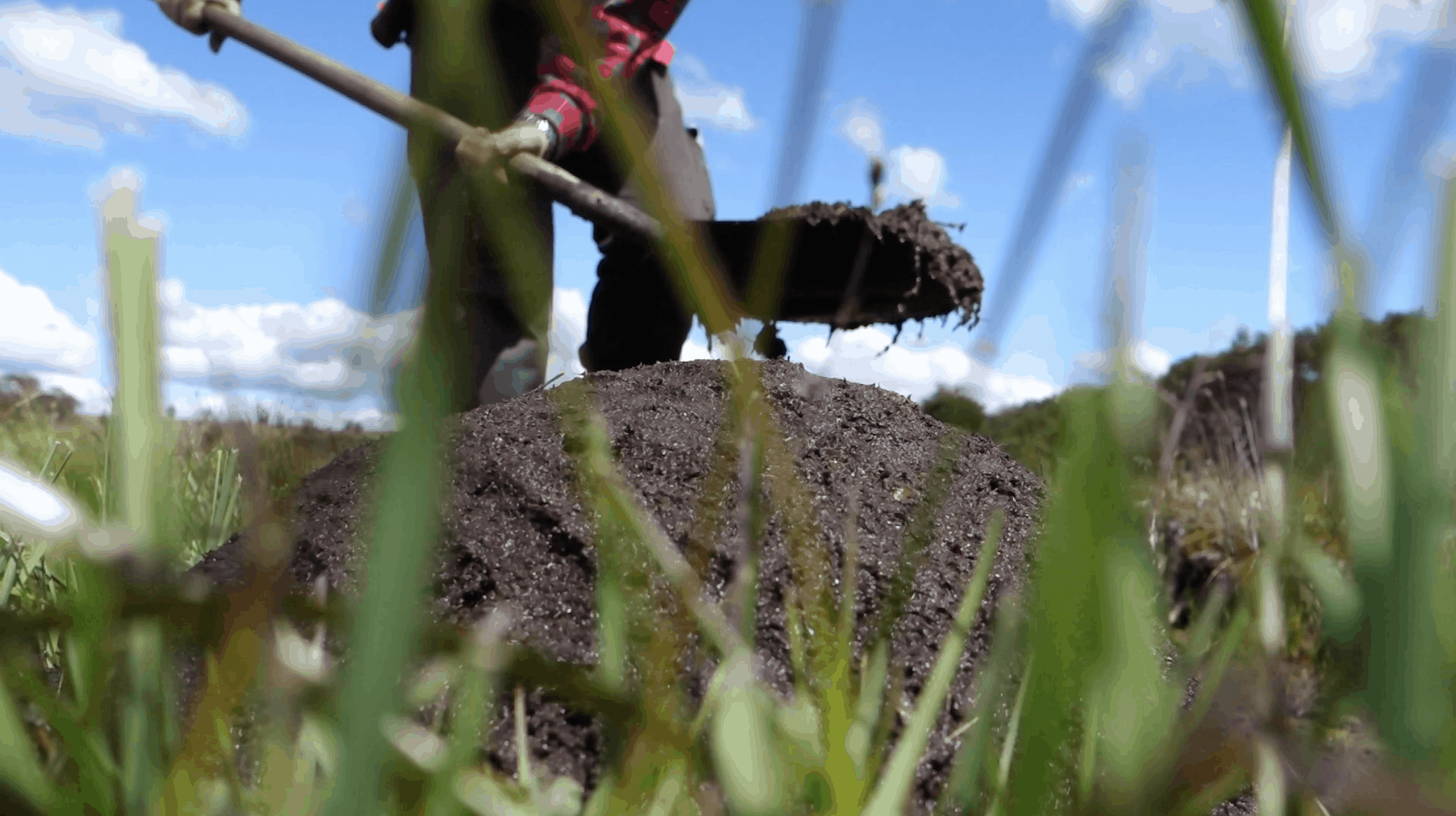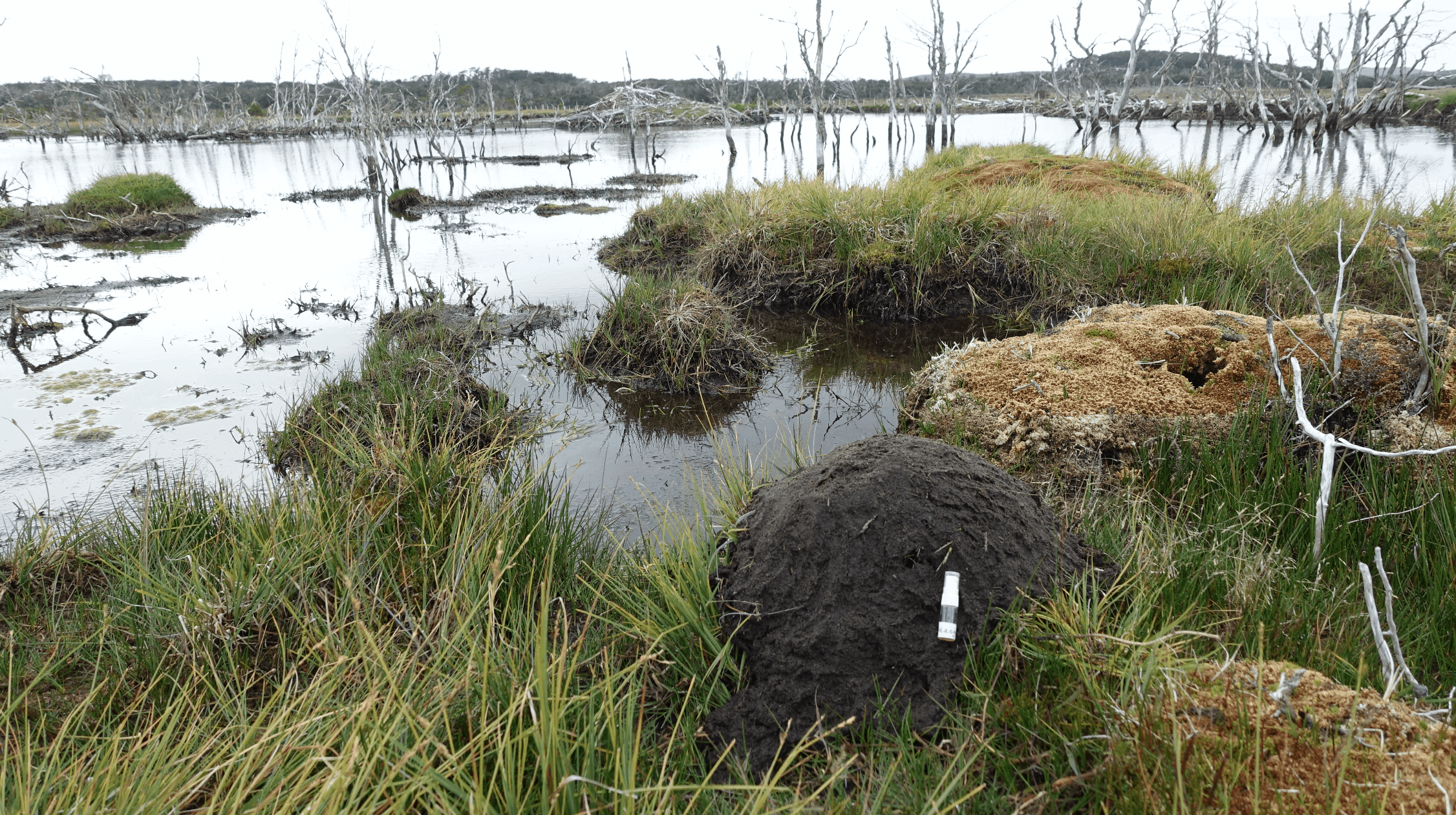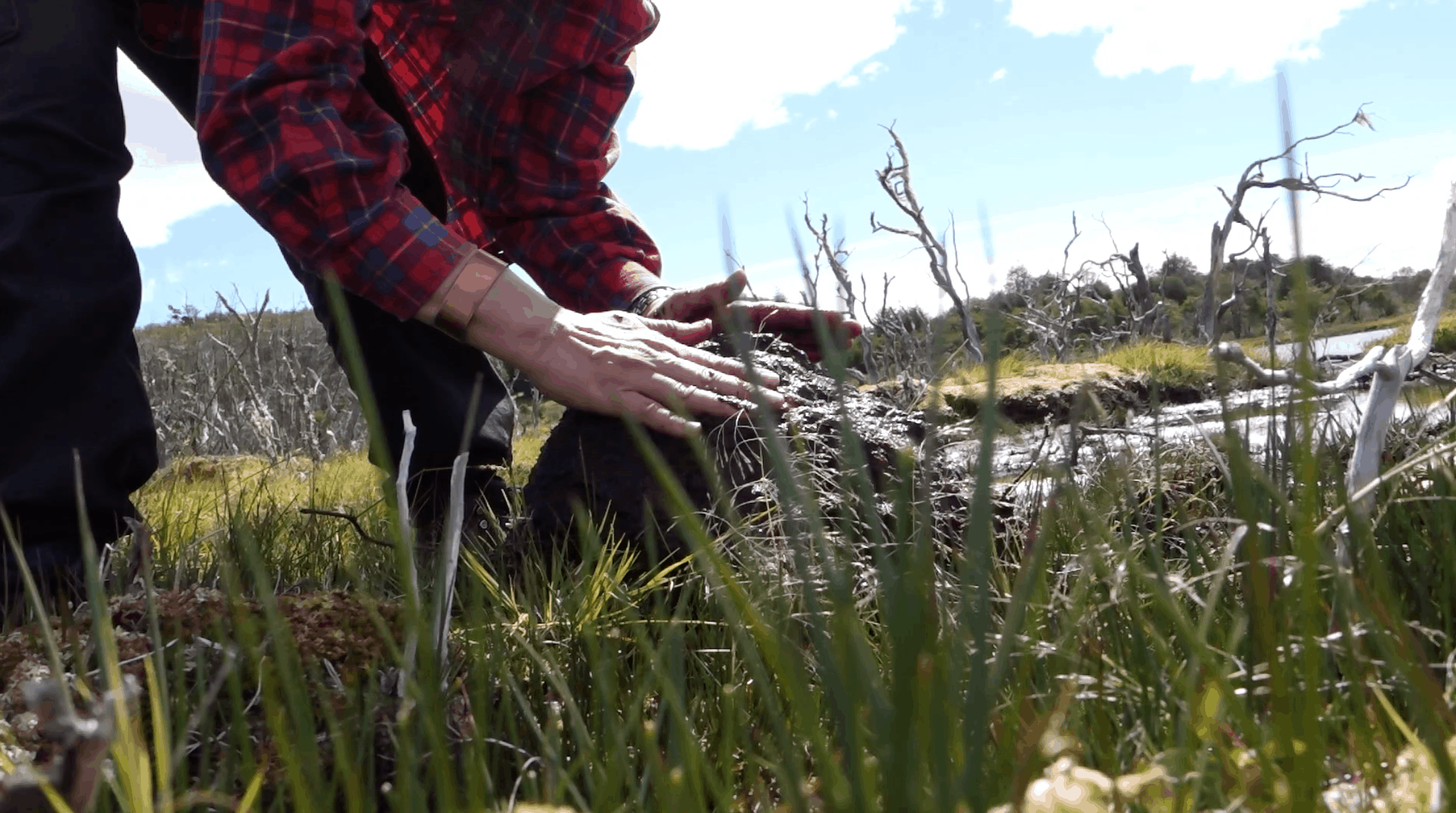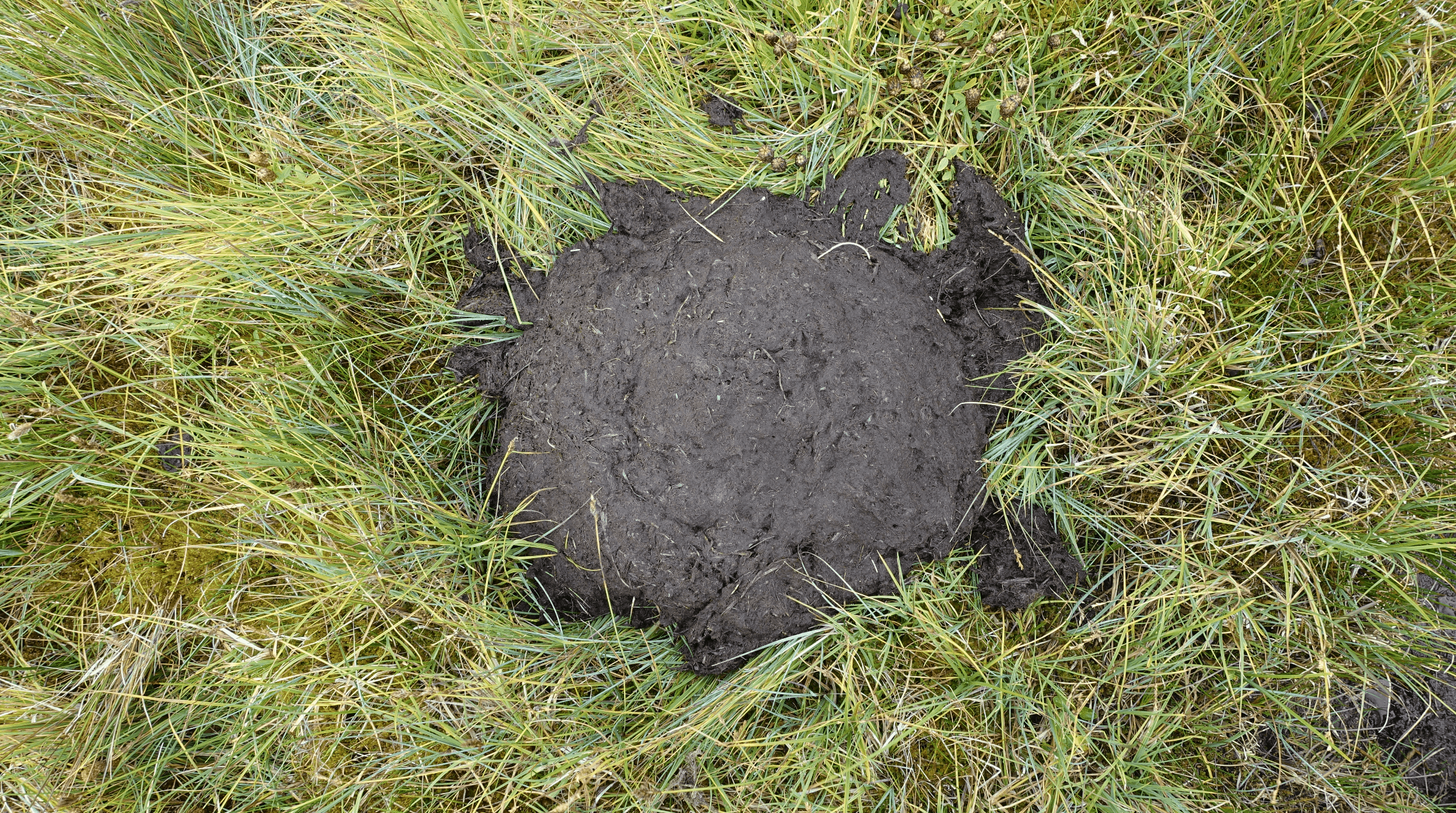Christy Gast’s field notes from the beaver experiment at Estancia Vicuña
January 31st, 2016
I borrowed a shovel from the guarda parques at Karukinka and walked across the pamapa and the turba towards the river that flows in front of Estancia Vicuña. There, I had been told by the chief ranger Mauricio Chacon, was an active beaver dam on the small chorillo that flowed through the turba towards the larger river.
I walked down the sloping pampas, seeing and hearing guanacos laughing at me in the distance. They are almost the same color as the grass on that vast plain. At a lower elevation, the land I was walking on became more spongey. Little hills almost the size of furniture, like footstools or dog houses, these were made of turba or peat. In between the earth was very squishy and aerated, made of decomposing turba. It’s kind of like a swamp, it can give away and suddenly your leg is in water up to your thigh.
This is the first time I’ve seen a beaver dam in the turba. There aren’t many trees here, so the beavers excavate extremely long tunnels so they can travel safely out to the small stands of trees that manage to grow in this waterlogged area. This way they can stay hidden as they travel the long distance to their snacks, and they can remain in the water, where’ they’re more graceful than on land. The loose, living turba must be quite easy for them to dig through, because their network of tunnels here is extensive.
I reach the pond. Yesterday I wasn’t convinced that it was active because I walked to the nearest trees and had trouble telling if the beavers had been eating there recently. I thought maybe they had already been killed or trapped, which was the case at the dam behind Puerto Yartou. Mauricio told me it was definitely active, so I came to do the scent mound experiment.
I made four mounds on the side of the castorera closest to Vicuña, crossing several canals as I did so. I avoided making my mounds right next to the beavers’ mounds, so I adjusted to spacing a bit. I numbered thes A1 through A4 in my notes. I used the shovel to make the mounds. Sometimes it was difficult to get earth, and instead I pulled up shovels full of brown, rotting turba. When I did get earth, it was so consistent that it was very easy to mold into nice, round mounds like pregnant bellies. I tried to pat them smooth, and as I did a thin layer of water formed on top. Some of the mounds retained my fingerprints. I sprayed them with the scents, and I noticed that the scents left a thin, slightly oily film on top of the wet turba.
I walked across a big dam, which was made of small sticks with turba packed in between. It was difficult to keep my balance because the sticks were so small, but I noticed that the beavers had been patching this dam very recently. I felt like a beaver myself, scooping up the rotting turba to make my belly mounds.
The other side of the dam was a bit further than the first side from the castorera, and the edge of the pond and canals was fairly freshly dug so it was difficult to find a place where I could get some dirt. Under the water was mostly rotting turba. I did find some dirt, but it wasn’t as lovely as the dirt on the other side. I made four mounds, 1B through 4B. Then I followed the largest canal through the turba to a stand of small trees to see what and where the beavers had been eating. I wasn’t sure if they were lenga or ñirre trees, but there were some calafate and mata negra bushes, as well. Mostly mata negra, which grows out of the small turba hills rather than out of the wet soil below.
I walked downstream along the river, and followed that through the pampas for a while until I cut back uphill to Vicunã where my dinner was waiting.
February 1st, 2016
With Mauricio Chacon, the chief of the guarda parques, I returned to the beaver dam this morning. We both had missions related to the beavers. It was his job to put up new traps to try and rid this chorillo of them, and I was checking the mounds. It was an obvious comparison, but I found Mauricio to be very beaverlike when he was installing the traps.
He gathered sticks that the beavers had cut and speared them into the ground to form an X over the canal. This would hold the trap in place. The trap was an apparatus that the beavers would swim through without noticing, getting caught, which would cause them to drown. He thought that this was more humane than the traps that cause beavers to starve to death. Mauricio butchers and eats beavers when he catches them, and tans their hides to make mate bags. These bags are prized by all those who have them.
First I checked the mounds on the side of the castorera nearest to Vicuña. I didn’t see any changes to the mounds themselves, but there was clearly a new marking of castoreum sprayed by a beaver next to the mound that I had sprayed with the brown scent—4B. I remember that the brown scent refers to places where the beavers don’t thrive—the tops of mountains and places like that. And here, at the dam in the turba, which is flat and wet, this is the scent that the beaver reacted to. It’s difficult to imagine if this was an aesthetic determination on the part of the beaver, or if it was just a random decision. The castoreum was sprayed next to the mound, just below it in the canal where I had dug the hole. You can see the hole, the castoreum residue, and the mound in one of my photos.
On the other side of the dike, I had a big surprise. In fact, a delight. A beaver had trampled one of the mounds! What could it mean? The mound was about half the height as I had originally made it, and the beaver’s paw prints made deep impressions. I imagine the beaver slamming its little body down on my mound. What was it thinking? What did it want me to know? Who was it communicating with? Did it like the mound or not? Did it like the smell? I was so happy to see those paw prints, those deep claw marks in the mound. Some sort of communication was happening. This was on the mound that was sprayed with the green scent. I can’t remember what kind of place the green refers to. Does it refer to the turba? Why did the green and brown scents elicit responses?
I filmed the scent mounds as I reviewed them, and I spoke my observations so that my immediate impressions would also be recorded. Afterwards, I crossed the dike between the upper and lower ponds and helped Mauricio finish setting up his traps. Tomorrow he will look for beavers. I wonder if the scents have set them on alert, so they’ll be wary of Mauri’s traps.
********
For the next two days, Mauricio checked his traps and hadn’t caught any beavers. On the third day I returned to Punta Arenas.




